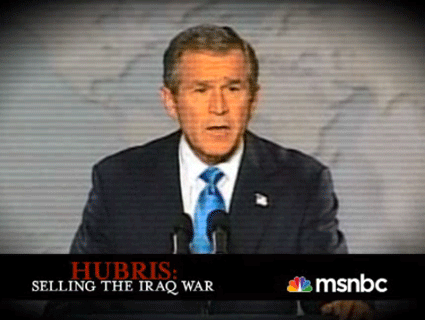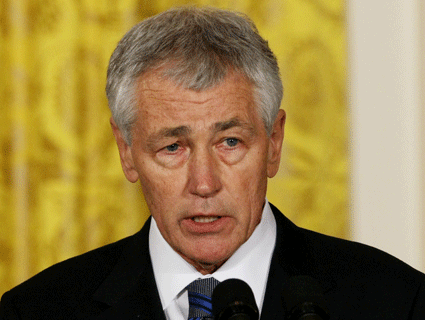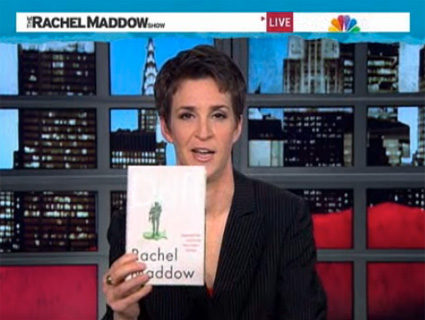
<a href="http://www.nbcnews.com/id/3036750/ns/msnbc-documentaries/#50736581">MSNBC</a>
A decade ago, on March 19, 2003, President George W. Bush launched the invasion of Iraq that would lead to a nine-year war resulting in 4,486 dead American troops, 32,226 service members wounded, and over 100,000 dead Iraqi civilians. The tab for the war topped $3 trillion. Bush did succeed in removing Saddam Hussein, but it turned out there were no weapons of mass destruction and no significant operational ties between Saddam’s regime and Al Qaeda. That is, the two main assertions used by Bush and his crew to justify the war were not true. Three years after the war began, Michael Isikoff, then an investigative reporter for Newsweek (he’s since moved to NBC News), and I published Hubris: The Inside Story of Spin, Scandal, and the Selling of the Iraq War, a behind-the-scenes account of how Bush, Vice President Dick Cheney, and their lieutenants deployed false claims, iffy intelligence, and unsupported hyperbole to win popular backing for the invasion.
Our book—hailed by the New York Times as “the most comprehensive account of the White House’s political machinations”—was the first cut at an important topic: how a president had swindled the nation into war with a deliberate effort to hype the threat. The book is now the basis for an MSNBC documentary of the same name that marks the 10th anniversary of the Iraq war. Hosted by Rachel Maddow, the film premieres Monday night in her usual time slot (9PM ET/PT). But the documentary goes beyond what Isikoff and I covered in Hubris, presenting new scoops and showing that the complete story of the selling of that war has yet to be told.
One chilling moment in the film comes in an interview with retired General Anthony Zinni, a former commander in chief of US Central Command. In August 2002, the Bush-Cheney administration opened its propaganda campaign for war with a Cheney speech at the annual Veterans of Foreign Wars convention. The veep made a stark declaration: “There is no doubt that Saddam Hussein now has weapons of mass destruction. There is no doubt he is amassing them to use against our friends, against our allies, and against us.” No doubt, he proclaimed, Saddam was arming himself with WMD in preparation for attacking the United States.
Zinni was sitting on the stage during the speech, and in the documentary he recalls his reaction:
It was a shock. It was a total shock. I couldn’t believe the vice president was saying this, you know? In doing work with the CIA on Iraq WMD, through all the briefings I heard at Langley, I never saw one piece of credible evidence that there was an ongoing program. And that’s when I began to believe they’re getting serious about this. They wanna go into Iraq.
That Zinni quote should almost end the debate on whether the Bush-Cheney administration purposefully guided the nation into war with misinformation and disinformation.
But there’s more. So much more. The film highlights a Pentagon document declassified two years ago. This memo notes that in November 2001—shortly after the 9/11 attacks—Secretary of Defense Donald Rumsfeld met with General Tommy Franks to review plans for the “decapitation” of the Iraqi government. The two men reviewed how a war against Saddam could be triggered; that list included a “dispute over WMD inspections.” It’s evidence that the administration was seeking a pretense for war.
The yellowcake uranium supposedly bought by Saddam in Niger, the aluminum tubes supposedly used to process uranium into weapons-grade material, the supposed connection between Saddam and Osama bin Laden—the documentary features intelligence analysts and experts who at the time were saying and warning that the intelligence on these topics was wrong or uncertain. Yet administration officials kept using lousy and inconclusive intelligence to push the case for war.
Through the months-long run-up to the invasion, Colin Powell, then the secretary of state, would become the administration’s No. 1 pitchman for the war with a high-profile speech at the UN, which contained numerous false statements about Iraq and WMD. But, the documentary notes, he was hiding from the public his deep skepticism. In the film, Lawrence Wilkerson, Powell’s chief of staff at the time, recalls the day Congress passed a resolution authorizing Bush to attack Iraq:
Powell walked into my office and without so much as a fare-thee-well, he walked over to the window and he said, “I wonder what’ll happen when we put 500,000 troops into Iraq and comb the country from one end to the other and find nothing?” And he turned around and walked back in his office. And I—I wrote that down on my calendar—as close for—to verbatim as I could, because I thought that was a profound statement coming from the secretary of state, former chairman of the joint chiefs of staff.
Wilkerson also notes that Powell had no idea about the veracity of the intelligence he cited during that UN speech: “Though neither Powell nor anyone else from the State Department team intentionally lied, we did participate in a hoax.”
A hoax. That’s what it was. Yet Bush and Cheney went on to win reelection, and many of their accomplices in this swindle never were fully held accountable. In the years after the WMD scam became apparent, there certainly was a rise in public skepticism and media scrutiny of government claims. Still, could something like this happen again? Maddow remarks, “If what we went through 10 years ago did not change us as a nation—if we do not understand what happened and adapt to resist it—then history says we are doomed to repeat it.”









